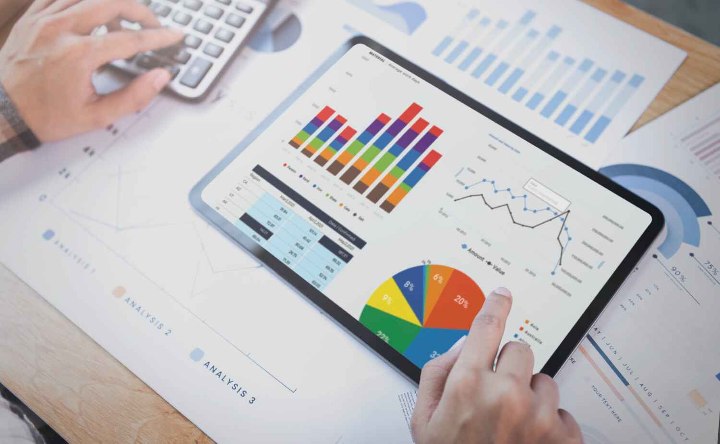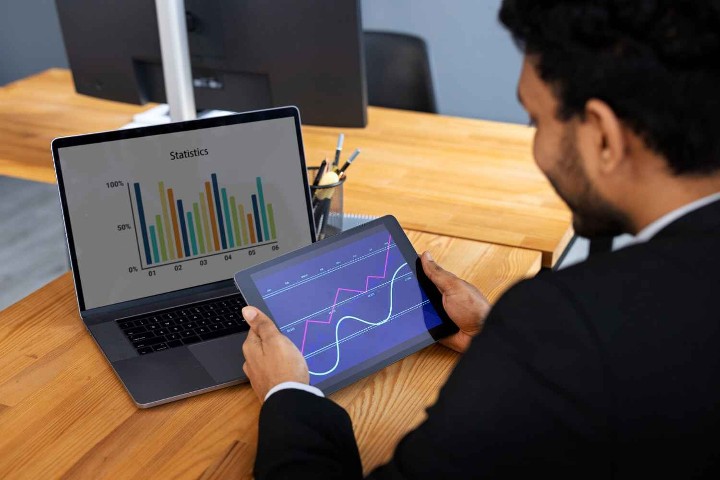Algorithmic trading, or Algo Trading, uses pre-programmed trading instructions to execute stock market orders. Backtesting helps traders identify potential pitfalls and adjust their trading techniques to maximize earnings while avoiding risk. This technique has data quality and availability issues, overfitting, and transparency.
Besides these challenges, current technological breakthroughs such as AI and machine learning, cloud computing, and big data analytics are paving the way for backtesting in the future.
This article will discuss these breakthroughs, their possible impact on the future of algorithmic trading in India and abroad, and the ethical considerations that must be addressed to ensure this new sector's sustained success.
Backtesting in Algo Trading
Backtesting is crucial to algorithmic trading, allowing traders to assess and test their trading algorithms using previous data. By running their algorithms through initial market conditions, traders may see how their strategies would have performed. Accordingly, they make required improvements before risking actual money.

Backtesting applies a trading algorithm to historical market data to determine how it would have performed. Backtesting can help traders evaluate their trading strategies' accuracy, dependability, and consistency. These 3 aims of Backtesting are crucial for the algorithm to perform Backtesting successfully in real-world trading conditions.
The primary goal of Backtesting is accuracy. Backtesting ensures that the algorithm can predict market moves and make winning trades. It implies the algorithm must be able to provide signals that appropriately reflect market conditions and result in lucrative trades.
Backtesting's second objective is reliability. A solid trading strategy is one that consistently makes profits over time. Backtesting can help traders determine which methods work and which don't so they can alter their algorithms.
Finally, it seeks consistency. A consistent trading technique works well in all market conditions. Backtesting can assist traders in assessing the consistency of their algorithms by running them through numerous market conditions and analyzing the results.
Current Challenges in Backtesting
Backtesting is a critical component of algorithmic trading, but it's challenging. In this section, we'll explore current challenges in backtesting that traders face today, especially in emerging markets like algorithmic trading India.
1. Data Quality And Availability
One of the most significant challenges in Backtesting is data quality and availability. Historical market data is a crucial component of Backtesting, but obtaining reliable data can be difficult, especially in developing markets. Only accurate or complete data can lead to good backtesting results, which can be disastrous in real-world trading situations. Additionally, obtaining quality data can be expensive and a significant barrier for small traders.
2. Overfitting
Overfitting is another difficulty that must be overcome. It refers to customizing an algorithm to conform too closely to historical market conditions. Overfitting might lead to incorrect results when applied to real-world trading scenarios since the algorithm might need help adjusting to the market's constantly shifting conditions.
3. Lack of Transparency
Transparency is essential in algorithmic trading, but it can be challenging to achieve in Backtesting. Backtesting can be difficult for traders because it sometimes needs to be clarified how their algorithms are doing or what changes they need to make to improve their results. It is also a problem in developing markets, where more industry standards for Backtesting may be required.
Discover The Power of Hindsight With Our Backtesting Feature.
Join us and make your profits.
Future Advancements in Backtesting
As algorithmic trading continues to grow in popularity, Trading bot backtesting remains an essential part of the process. However, some challenges come with Backtesting, particularly in developing markets like the algorithmic trading app in India.
Fortunately, technological advancements are paving the way for improvements in Backtesting, making it easier for traders to obtain reliable data and achieve accurate results. In this section, we'll explore future advancements in Backtesting.
1. Improved Data Quality and Availability
One of the most significant advancements in Backtesting is improving data quality and availability. With the rise of big data analytics and cloud computing, traders now have access to vast amounts of data that can help enhance backtesting accuracy.
2. Artificial Intelligence and Machine Learning
Backtesting is becoming more and more dependent on artificial intelligence and machine learning. Traders may wait to recognize specific patterns and trends in the data, but with the assistance of these tools, they can do so. Traders can now more correctly predict market movements and alter their algorithms in response, leading to improved trading outcomes thanks to artificial intelligence (AI) and machine learning (ML).
3. Cloud Computing and Big Data Analytics
The future of Backtesting will also be significantly influenced by cloud computing and big data analytics. These technologies enable traders to store and analyze massive amounts of data promptly and effectively.
4. Better Visualization Tools
Developments are also improving the backtesting procedure in visualization tools. Traders would have an easier time analyzing data and identifying trends if they had better visualization tools, resulting in more accurate findings when backtesting.
Read More: A Smart Way Of Investing In The Stock Market - AlgoTrading
Integration of Backtesting with Real-time Trading

There are limitations to current backtesting methods that can make it challenging to obtain accurate results. One solution to this challenge is the integration of backtesting with real-time trading. In this section, we'll explore the limitations of current backtesting methods, the need for real-time feedback, and the advantages of real-time integration, particularly in automated trading apps.
1. Limitations of Current Backtesting Methods
The fact that current backtesting approaches depend on past data is one of the most significant shortcomings of these methods. Although historical data helps forecast future patterns, it does not precisely reflect current market conditions. In addition, current backtesting approaches must provide real-time feedback, making it challenging to alter algorithms.
2. Need for Real-Time Feedback
Real-time feedback is crucial for successful automated trading, especially in automated trading apps. With real-time feedback, traders may gain opportunities to adjust their algorithms and exploit changing market conditions. Real-time feedback can also help traders identify algorithm errors and make corrections quickly, improving overall trading outcomes.
3. Advantages of Real-Time Integration
Real-time integration of Backtesting and trading can provide several advantages.
First, it allows traders to adjust their algorithms in real-time based on current market conditions. It can lead to better trading outcomes and improved profitability.
Second, real-time integration provides immediate feedback, allowing traders to quickly identify errors or inefficiencies in their algorithms and make corrections.
Finally, real-time integration can help traders stay competitive in fast-paced markets, where milliseconds can make a significant difference.
Ethical Considerations in Backtesting
Algorithmic trading has revolutionized the financial industry and raises ethical concerns about Backtesting. Partial data and algorithmic decisions can give sure market participants an unfair advantage, leading to potential market manipulation. Therefore, ensuring transparency and accountability in automated trading apps is essential.
Here are some key points to consider:
1. Potential for Biased Data and Algorithmic Decisions
Backtesting algorithms rely on historical data to test trading strategies. However, data can be biased, incomplete, or inaccurate, resulting in poor backtesting results. It can lead to over-optimization, or "curve-fitting," where a trading strategy is overfitted to past data and may not work in the future.
2. Importance of Transparency and Accountability in Automated Trading Apps
Transparency and accountability are crucial to address concerns around partial data and algorithmic decisions. Regulators increasingly implement rules and guidelines to ensure fair and ethical practices in trading apps.
3. Need for Ethical Guidelines and Regulation
As Algo Trading continues to evolve, the need for ethical guidelines and regulation becomes more apparent. Regulators should work closely with industry participants to develop guidelines that promote transparency, fairness, and ethical behavior in Backtesting and algorithmic trading.
Conclusion
Backtesting is vital to the success of algorithmic trading. Current technological developments are shaping the future of Algo Trading. Backtesting methodologies are improving thanks to AI and machine learning, cloud computing, big data analytics, and better visualization tools. With these advances, the future of algorithmic trading is bright, and investors may expect further success in this burgeoning business.

